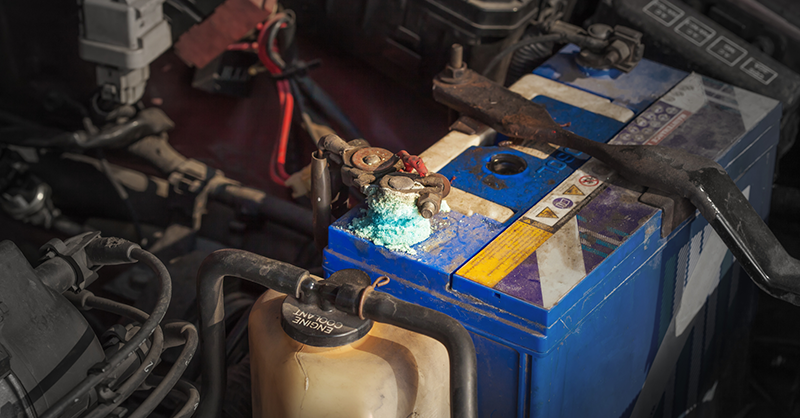Your Battery Wants to Tell You Something

Those first cold mornings after a long, hot summer can be the death knell for your battery.
“Summer heat puts a real strain on the battery that may not appear until that cool fall or cold winter morning,” said Gale Kimbrough, technical services manager for Interstate Battery. “Every vehicle’s battery should be tested prior to extreme temperature changes.”
The amount of driving and length of your trips also plays into battery wear and tear.
“People who drive sporadically or consistently drive short trips often encounter discharged batteries due to the increased parasitic drains,” he said.
Basic automobile batteries have remained unchanged for decades. They contain lead and plastic components along with an electrolyte solution of sulfuric acid and water. The solution interacts with the lead to generate power when you turn the key.
Over time, extreme heat corrodes a battery’s lead plates and metal posts.
“Summer is really the toughest on car batteries. If you think it is hot outside, imagine what it’s like under the hood,” Kimbrough said.
Kimbrough offered the following about maximizing battery life and the importance of getting them tested before winter:
- A vehicle’s charging system should be checked every three months or every oil change. Batteries that are more than three years old should be tested more frequently.
- Always get the battery checked before taking a long road trip. Have a professional mechanic inspect battery cables, posts and fasteners. Cables should have no fraying and must be secured firmly to the battery. Also look for cable corrosion, which reduces power from flowing from the battery.
- Get battery terminals cleaned, especially if they have any buildup of crust. Accumulated corrosion shortens a battery’s life.
- Make sure replacement batteries meet or exceed manufacturer recommendations for your specific vehicle. Battery ratings and size are particularly important to assure enough power for harsh weather conditions.
"A fully charged battery is the best defense against cold weather and vehicle non-starts,” Kimbrough said. “In cold weather, engines require more cranking amps and batteries are less efficient, reducing their charge acceptance and ability to start an engine.”